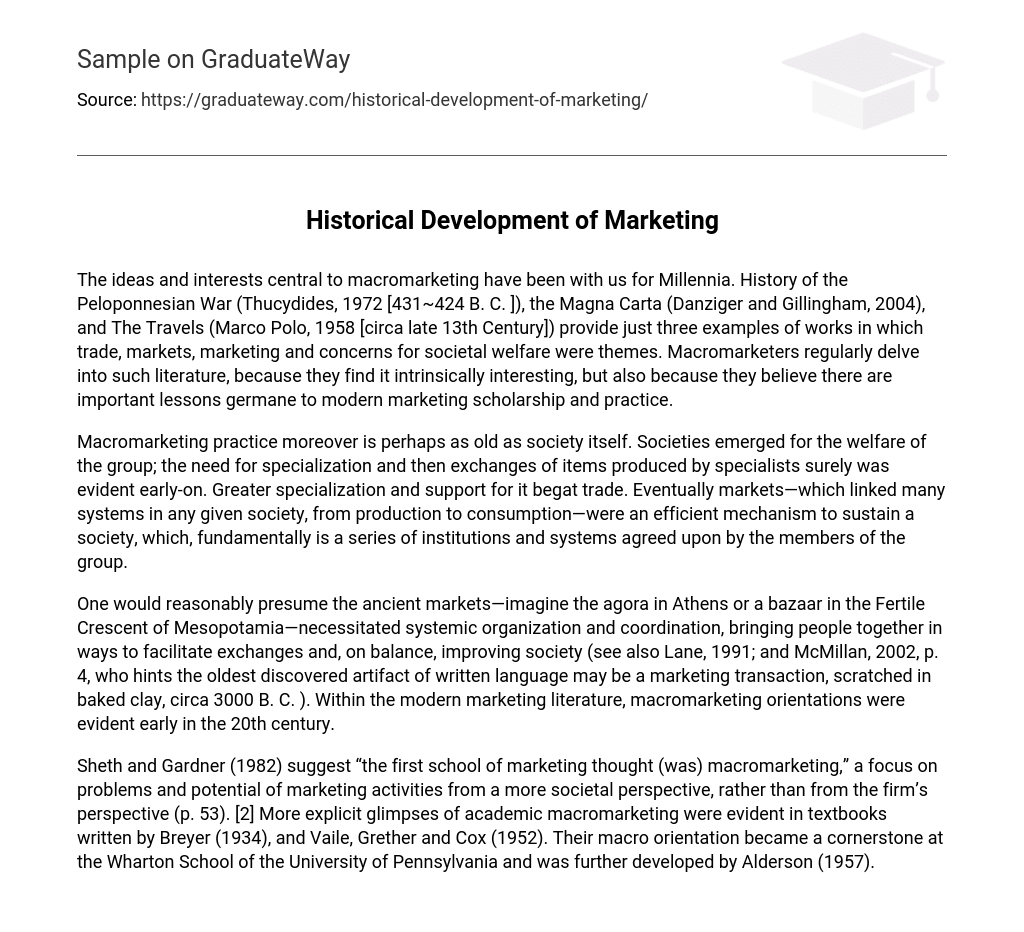The ideas and interests central to macromarketing have been with us for Millennia. History of the Peloponnesian War (Thucydides, 1972 [431~424 B. C. ]), the Magna Carta (Danziger and Gillingham, 2004), and The Travels (Marco Polo, 1958 [circa late 13th Century]) provide just three examples of works in which trade, markets, marketing and concerns for societal welfare were themes. Macromarketers regularly delve into such literature, because they find it intrinsically interesting, but also because they believe there are important lessons germane to modern marketing scholarship and practice.
Macromarketing practice moreover is perhaps as old as society itself. Societies emerged for the welfare of the group; the need for specialization and then exchanges of items produced by specialists surely was evident early-on. Greater specialization and support for it begat trade. Eventually markets—which linked many systems in any given society, from production to consumption—were an efficient mechanism to sustain a society, which, fundamentally is a series of institutions and systems agreed upon by the members of the group.
One would reasonably presume the ancient markets—imagine the agora in Athens or a bazaar in the Fertile Crescent of Mesopotamia—necessitated systemic organization and coordination, bringing people together in ways to facilitate exchanges and, on balance, improving society (see also Lane, 1991; and McMillan, 2002, p. 4, who hints the oldest discovered artifact of written language may be a marketing transaction, scratched in baked clay, circa 3000 B. C. ). Within the modern marketing literature, macromarketing orientations were evident early in the 20th century.
Sheth and Gardner (1982) suggest “the first school of marketing thought (was) macromarketing,” a focus on problems and potential of marketing activities from a more societal perspective, rather than from the firm’s perspective (p. 53). [2] More explicit glimpses of academic macromarketing were evident in textbooks written by Breyer (1934), and Vaile, Grether and Cox (1952). Their macro orientation became a cornerstone at the Wharton School of the University of Pennsylvania and was further developed by Alderson (1957).





